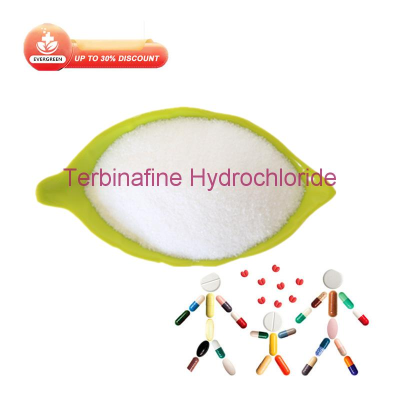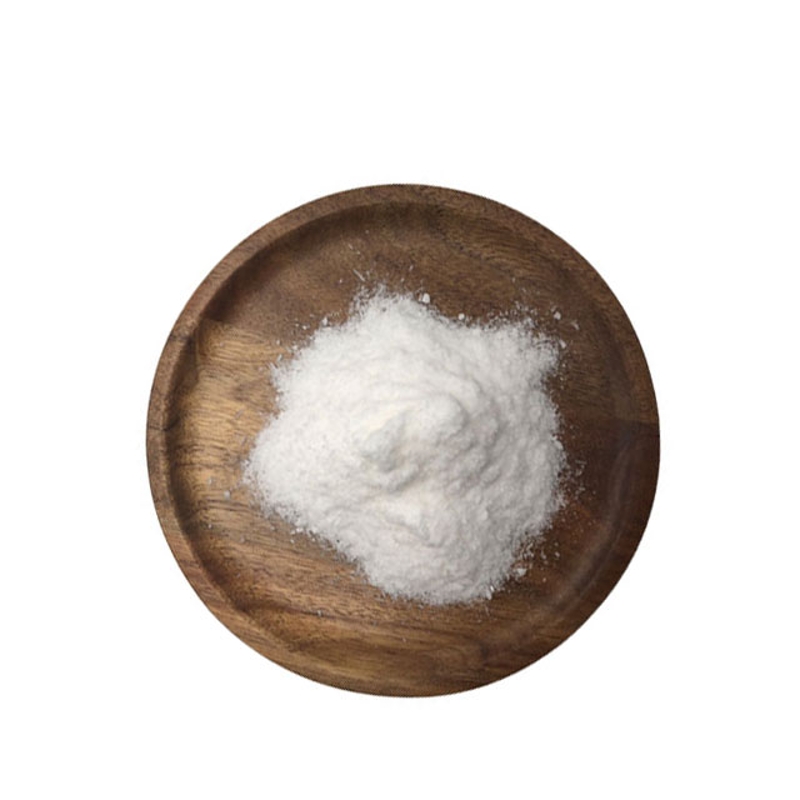-
Categories
-
Pharmaceutical Intermediates
-
Active Pharmaceutical Ingredients
-
Food Additives
- Industrial Coatings
- Agrochemicals
- Dyes and Pigments
- Surfactant
- Flavors and Fragrances
- Chemical Reagents
- Catalyst and Auxiliary
- Natural Products
- Inorganic Chemistry
-
Organic Chemistry
-
Biochemical Engineering
- Analytical Chemistry
- Cosmetic Ingredient
-
Pharmaceutical Intermediates
Promotion
ECHEMI Mall
Wholesale
Weekly Price
Exhibition
News
-
Trade Service
Coccidioides immitis is an infectious disease caused by the biphasic fungi Coccidioides immitis and Coccidioides posadasii.
It is usually prevalent in the southwestern United States, California and Mexico.
It is a very important endemic fungal disease in North America with a high fatality rate and serious harm.
People are healthy.
At present, with the continuous development of international exchanges and tourism, the number of imported cases reported in non-endemic areas has gradually increased.
Coccidioidomycosis is clinically non-specific and can easily be misdiagnosed as a tumor or other infectious diseases in non-endemic areas, such as tuberculosis.
Therefore, its accurate diagnosis is of great significance for precise treatment and improving the cure rate of patients.
At present, the diagnosis of coccidioidomycosis is mainly based on exposure history, clinical manifestations and laboratory tests.
Patients with recent travel history in endemic areas with clinical manifestations of the respiratory system should consider the possibility of coccidioidomycosis; laboratory examinations include histopathological examinations, pathogen isolation and culture, serological examinations and molecular biological examinations for pathogenic fungi And identification methods.
Histopathological examination is the gold standard for diagnosis; pathogen culture needs to be carried out in a level 3 biosafety laboratory, which requires high laboratory conditions and qualifications from the perspective of biosafety, and may also lead to potential laboratory transmission.
In non-endemic areas, serum antibody screening is usually not routinely performed, and its diagnostic value is also limited.
If clinical specimens cannot be cultured to determine the pathogenic fungus species, advanced methods are used to detect and identify pathogenic fungi from paraffin-embedded tissues, which is a reliable and accurate method for identifying coccidioides.
Recently, the research group of Professor Liu Wei of Peking University published a research paper titled: Application of laser capture microdissection and PCR sequencing in the diagnosis of Coccidioides spp.
infection: A case report and literature review in China on Emerging Microbes & Infections.
The study reported the first use of laser capture microdissection (LCM) combined with PCR amplification, Real-time PCR and next-generation sequencing (New generation sequencing, NGS) to carry out a case of imported pneumococcal disease.
Cases of accurate molecular diagnosis.
China is a non-endemic area of coccidioidomycosis, but imported cases have gradually increased in recent years, and it is easy to be misdiagnosed as tumors, tuberculosis, etc.
; in order to improve the clinical understanding of the disease among Chinese medical staff, the research team will still be closed before submission A total of 47 cases of coccidioidomycosis reported in China were retrospectively analyzed and sorted out.
The results show that because coccidioidomycosis is a rare or even rare serious fungal infectious disease in China, the diagnostic methods are very limited; of the 47 reported cases of coccidioidomycosis, none of the clinical specimens that cannot be cultured or cultured are negative.
Coccidioides were detected.
For the patient admitted this time, the research team found the characteristic spheres and endospores of coccidioidomycetes (as shown in Figure 1) and other typical morphologies from histopathological examinations, and used LCM technology to fix and fix it from formalin.
The fungal components are obtained from the paraffin-embedded (formalin fixed and paraffin-embedded, FFPE) lung tissue sections (as shown in Figure 2), and the fungal genomic DNA is extracted through PCR-Sanger sequencing, Real-time PCR (as shown in Figure 3) and NGS, etc.
Methods Coccidioides spp was detected.
Figure 1.
Histopathological examination. PAS staining (A) and GMS staining (B) showed multiple thick-walled spheroids and endospores (arrows) in the lung nodules.
Figure 2.
Using LCM to separate fungal components from FFPE tissue sections.
(A) Fuchsia, round fungal spores (arrows) scattered in the alveoli can be seen before LCM.
(B) Use LCM to separate and cut fungal spores in a sterile environment.
Figure 3.
Real-time PCR amplification curve using Coccidioides specific TaqMan probe and fungal DNA extracted from FFPE tissue isolated from LCM as a template.
This study provides new ideas for the accurate identification of coccidioidomycetes and other fungi or pathogens in tissues that cannot be cultured and FFPE, and provides an important reference for molecular etiology diagnosis of infectious diseases.
Professor Liu Wei from Peking University First Hospital is the corresponding author of the paper, and Dr.
Yang Xinyu and Assistant Researcher Song Yinggai are the co-first authors of the paper.
This research has been supported by the National Natural Science Foundation of China, the "Thirteenth Five-Year" National Science and Technology Project-AIDS and other infectious disease prevention and control major projects, and the National Natural Science Foundation of China (regional) cooperation and exchange projects.
Link to the paper: https:// 2020 hot article selection 1.
The cup is ready! A full paper cup of hot coffee, full of plastic particles.
.
.
2.
Scientists from the United States, Britain and Australia “Natural Medicine” further prove that the new coronavirus is a natural evolution product, or has two origins.
.
.
3.
NEJM: Intermittent fasting is right The impact of health, aging and disease 4.
Heal insomnia within one year! The study found that: to improve sleep, you may only need a heavy blanket.
5.
New Harvard study: Only 12 minutes of vigorous exercise can bring huge metabolic benefits to health.
6.
The first human intervention experiment: in nature.
"Feeling and rolling" for 28 days is enough to improve immunity.
7.
Junk food is "real rubbish"! It takes away telomere length and makes people grow old faster! 8.
Cell puzzle: you can really die if you don't sleep! But the lethal changes do not occur in the brain, but in the intestines.
.
.
9.
The super large-scale study of "Nature Communications": The level of iron in the blood is the key to health and aging! 10.
Unbelievable! Scientists reversed the "permanent" brain damage in animals overnight, and restored the old brain to a young state.
.
.
It is usually prevalent in the southwestern United States, California and Mexico.
It is a very important endemic fungal disease in North America with a high fatality rate and serious harm.
People are healthy.
At present, with the continuous development of international exchanges and tourism, the number of imported cases reported in non-endemic areas has gradually increased.
Coccidioidomycosis is clinically non-specific and can easily be misdiagnosed as a tumor or other infectious diseases in non-endemic areas, such as tuberculosis.
Therefore, its accurate diagnosis is of great significance for precise treatment and improving the cure rate of patients.
At present, the diagnosis of coccidioidomycosis is mainly based on exposure history, clinical manifestations and laboratory tests.
Patients with recent travel history in endemic areas with clinical manifestations of the respiratory system should consider the possibility of coccidioidomycosis; laboratory examinations include histopathological examinations, pathogen isolation and culture, serological examinations and molecular biological examinations for pathogenic fungi And identification methods.
Histopathological examination is the gold standard for diagnosis; pathogen culture needs to be carried out in a level 3 biosafety laboratory, which requires high laboratory conditions and qualifications from the perspective of biosafety, and may also lead to potential laboratory transmission.
In non-endemic areas, serum antibody screening is usually not routinely performed, and its diagnostic value is also limited.
If clinical specimens cannot be cultured to determine the pathogenic fungus species, advanced methods are used to detect and identify pathogenic fungi from paraffin-embedded tissues, which is a reliable and accurate method for identifying coccidioides.
Recently, the research group of Professor Liu Wei of Peking University published a research paper titled: Application of laser capture microdissection and PCR sequencing in the diagnosis of Coccidioides spp.
infection: A case report and literature review in China on Emerging Microbes & Infections.
The study reported the first use of laser capture microdissection (LCM) combined with PCR amplification, Real-time PCR and next-generation sequencing (New generation sequencing, NGS) to carry out a case of imported pneumococcal disease.
Cases of accurate molecular diagnosis.
China is a non-endemic area of coccidioidomycosis, but imported cases have gradually increased in recent years, and it is easy to be misdiagnosed as tumors, tuberculosis, etc.
; in order to improve the clinical understanding of the disease among Chinese medical staff, the research team will still be closed before submission A total of 47 cases of coccidioidomycosis reported in China were retrospectively analyzed and sorted out.
The results show that because coccidioidomycosis is a rare or even rare serious fungal infectious disease in China, the diagnostic methods are very limited; of the 47 reported cases of coccidioidomycosis, none of the clinical specimens that cannot be cultured or cultured are negative.
Coccidioides were detected.
For the patient admitted this time, the research team found the characteristic spheres and endospores of coccidioidomycetes (as shown in Figure 1) and other typical morphologies from histopathological examinations, and used LCM technology to fix and fix it from formalin.
The fungal components are obtained from the paraffin-embedded (formalin fixed and paraffin-embedded, FFPE) lung tissue sections (as shown in Figure 2), and the fungal genomic DNA is extracted through PCR-Sanger sequencing, Real-time PCR (as shown in Figure 3) and NGS, etc.
Methods Coccidioides spp was detected.
Figure 1.
Histopathological examination. PAS staining (A) and GMS staining (B) showed multiple thick-walled spheroids and endospores (arrows) in the lung nodules.
Figure 2.
Using LCM to separate fungal components from FFPE tissue sections.
(A) Fuchsia, round fungal spores (arrows) scattered in the alveoli can be seen before LCM.
(B) Use LCM to separate and cut fungal spores in a sterile environment.
Figure 3.
Real-time PCR amplification curve using Coccidioides specific TaqMan probe and fungal DNA extracted from FFPE tissue isolated from LCM as a template.
This study provides new ideas for the accurate identification of coccidioidomycetes and other fungi or pathogens in tissues that cannot be cultured and FFPE, and provides an important reference for molecular etiology diagnosis of infectious diseases.
Professor Liu Wei from Peking University First Hospital is the corresponding author of the paper, and Dr.
Yang Xinyu and Assistant Researcher Song Yinggai are the co-first authors of the paper.
This research has been supported by the National Natural Science Foundation of China, the "Thirteenth Five-Year" National Science and Technology Project-AIDS and other infectious disease prevention and control major projects, and the National Natural Science Foundation of China (regional) cooperation and exchange projects.
Link to the paper: https:// 2020 hot article selection 1.
The cup is ready! A full paper cup of hot coffee, full of plastic particles.
.
.
2.
Scientists from the United States, Britain and Australia “Natural Medicine” further prove that the new coronavirus is a natural evolution product, or has two origins.
.
.
3.
NEJM: Intermittent fasting is right The impact of health, aging and disease 4.
Heal insomnia within one year! The study found that: to improve sleep, you may only need a heavy blanket.
5.
New Harvard study: Only 12 minutes of vigorous exercise can bring huge metabolic benefits to health.
6.
The first human intervention experiment: in nature.
"Feeling and rolling" for 28 days is enough to improve immunity.
7.
Junk food is "real rubbish"! It takes away telomere length and makes people grow old faster! 8.
Cell puzzle: you can really die if you don't sleep! But the lethal changes do not occur in the brain, but in the intestines.
.
.
9.
The super large-scale study of "Nature Communications": The level of iron in the blood is the key to health and aging! 10.
Unbelievable! Scientists reversed the "permanent" brain damage in animals overnight, and restored the old brain to a young state.
.
.







